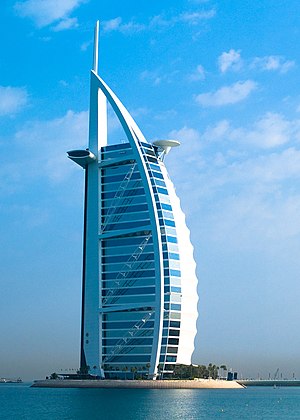|
Land reclamation in the United Arab Emirates
 Major land reclamation in the United Arab Emirates, though a relatively recent phenomenon, has significantly changed the geography of some parts of the country. Multiple land reclamation projects, both completed, under construction, and planned, have changed the appearance of Dubai, Abu Dhabi, and other emirates. HistoryAbu Dhabi One reclamation method used in Abu Dhabi is filling in low-lying coastal flats. Several industrial areas have been built in these areas.[1] Yas Island, Al Reem Island, and Al Lulu Island are a few examples. Ajman There have been proposals to reclaim land from the sea in Ajman. However, many have been rejected due to environmental concerns.[2] Dubai It was created to boost the tourism industry creating a complex society and a great place for tourists to rest (Happy 2001). Land reclamation in the emirate of Dubai has made it one of the most recognizable areas in the world. Dubai is perhaps most well known for land reclamation projects such as the Palm Islands, the World Islands, the Dubai Marina, and the Burj Al Arab. Most major land reclamation projects in Dubai have occurred in the past fifteen years,[when?] and the Burj Al Arab hotel, which is built on a man-made island, was started in 1994 and completed in 1999.[3] Ras Al Khaimah The emirate of Ras Al Khaimah has also joined the race to build new land reclamation projects. Such projects include Al Marjan Island and its Real Madrid Resort Island. GeographyThe Palm Islands are located off the coast of the United Arab Emirates in the Persian Gulf and will add 520 kilometers of non-public beaches to the city of Dubai. Projects
IssuesThere have been numerous environmental and economic concerns regarding the various land reclamation projects in the UAE. For example, extraction of rock and sand harms local environments and wildlife such as birds.[4] See also
References
|